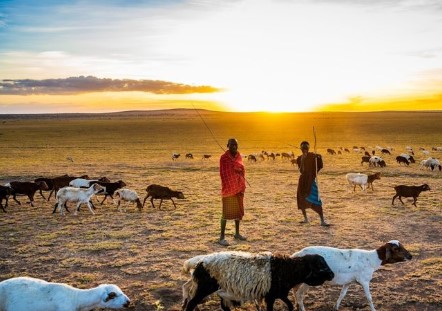In the vast savannahs of Tanzania, the Maasai people hold milk as a symbol of life and sustenance. This cherished drink is deeply embedded in their semi-nomadic lifestyle, spiritual practices, and cultural identity, serving as a cornerstone of their dietary and ceremonial traditions.
The Sacredness of Milk

For the Maasai, cattle are more than livestock—they are the foundation of their existence. Milk, derived from these prized animals, is regarded with profound respect and is integral to their diet. Often consumed fresh, milk can also be mixed with animal blood, a practice reserved for special occasions or as a fortifying meal. This mixture, known as “Ewo-rror,” is rich in nutrients and a testament to the Maasai’s sustainable use of their cattle.
Rituals of Gratitude
The act of milking is itself a ritual, carried out with care and reverence. Before consuming milk, Maasai elders offer blessings, expressing gratitude to the cattle for their vital contribution to the community. These blessings often include prayers for the health of the herd and the prosperity of the people, reflecting the Maasai’s symbiotic relationship with nature.

In ceremonies such as weddings or rites of passage, milk plays a central role, symbolizing purity and continuity. Women are often tasked with preparing milk-based beverages, which are shared as a gesture of hospitality and unity.
A Poetic Ode: “The White River”
Maasai oral traditions honor milk as the essence of life. In their poetry, milk is celebrated as a sustaining force:
“White river of the plains,
You nourish our hearts and dreams.
Through you, we thrive,
Our bond with the earth eternal.”
This poetic imagery underscores the Maasai’s deep appreciation for milk, viewing it as a divine gift that connects them to the land and their ancestors.
Discover the Full Story
The Maasai people’s reverence for milk exemplifies a culture of gratitude, sustainability, and harmony with the environment. Their practices offer valuable lessons about cherishing life’s essentials and living in balance with the natural world. Dive deeper into this timeless tradition in our From Shamba to Sahani cookbook.

Leave a Reply